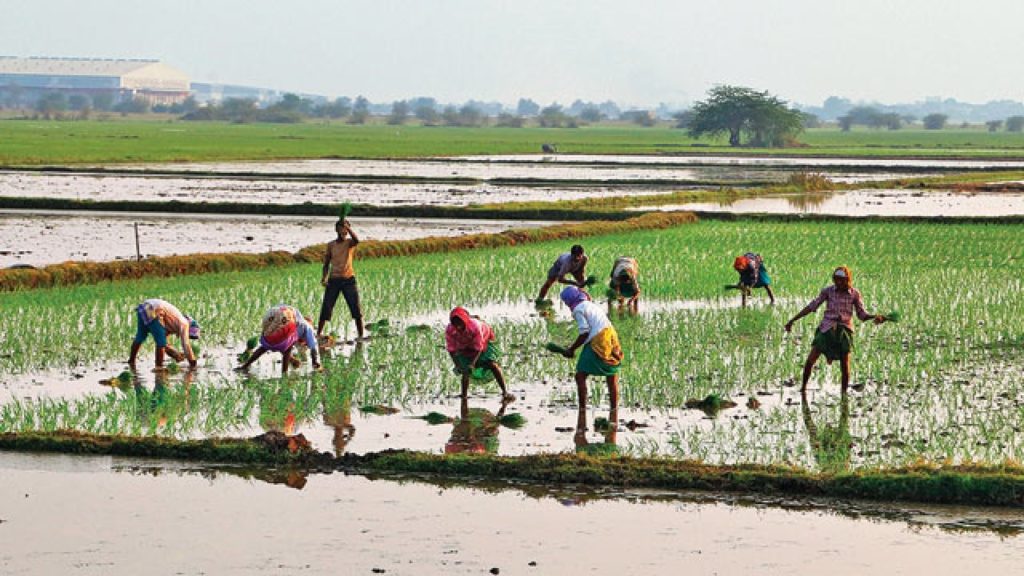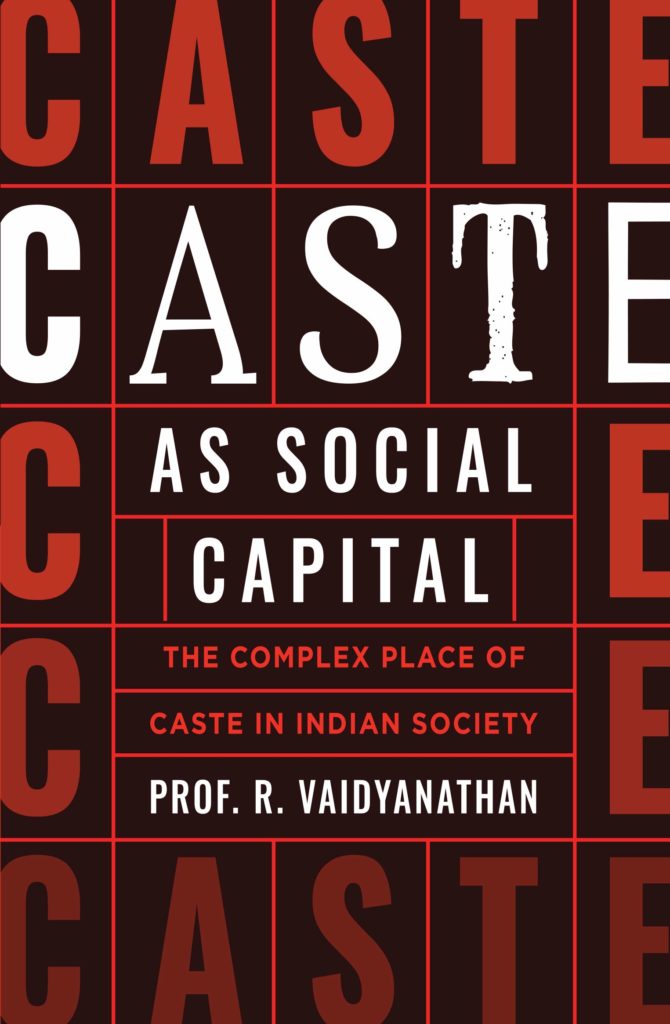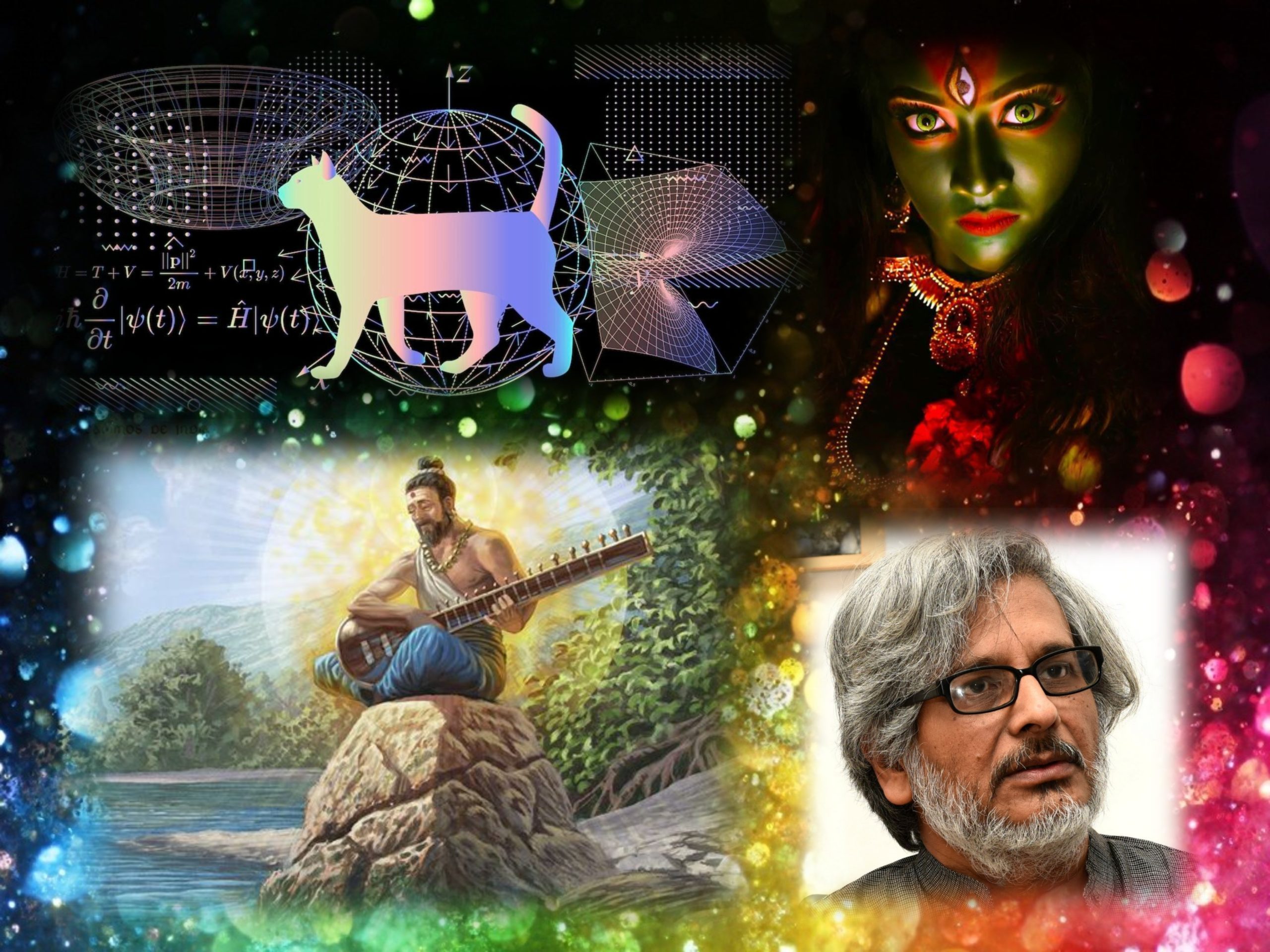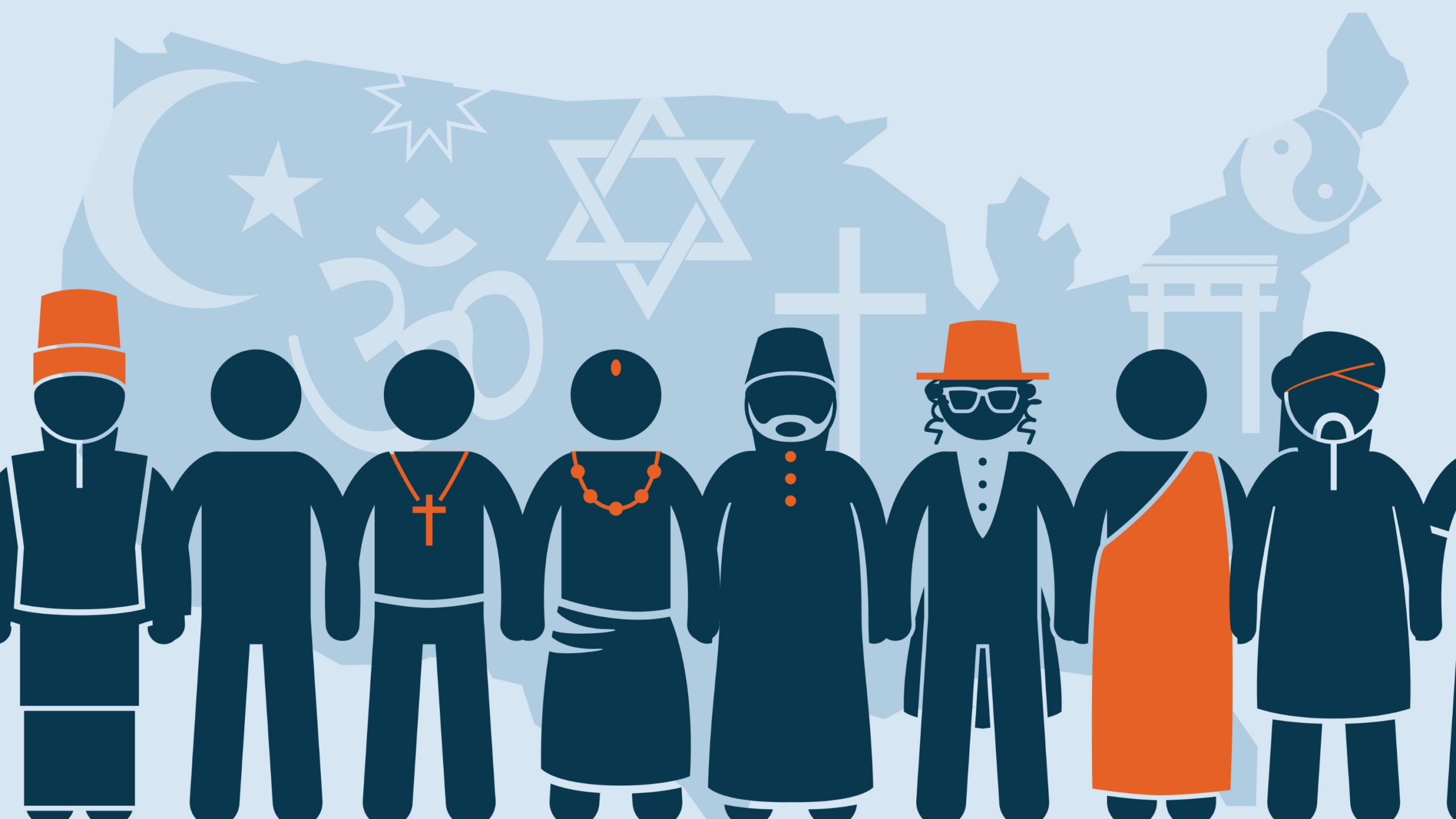- Visitor:93
- Published on:
Book review on “Caste as Social Capital: The Complex Place of Caste in Indian Society” by Ramachandran Vaidyanathan
If anyone understands the term social capital, then he definitely knows that caste is also a social capital. We must also realize, as shown from plenty of data points in the book, that though people from different backgrounds indulge in particular activities and retain a common idea of belongingness and identity with their own communities, this in due course also encourages them in taking up that specific livelihood. Also getting credits and risk mitigation becomes easier for them. At least in the non-organized sector, Indian business is primarily based on relationships and without any question, here caste definitely works as a social capital!

Right now, caste is a very sensitive topic in India that dominates the political discourse- closely linked with reservation and politics! Rich with historical data, Dr. R. Vaidyanathan has explored the economic aspect of caste system in India in this book. The clamor for more reservations in education and jobs is increasing and even in certain cases, funny, but true- the forward classes are also seen to be demanding reservations. However, the question arises of how far reservation can help Indians. It is evident that some are doing well due to their entrepreneurial skills or “Vaishyavisation”, as explained in this book, rather than gaining benefits from reservation. Considering the main economical sectors like service, industrial, and agriculture together, it is found that they actually thrive on social capital. Its base lies on communities sharing similar values and ethos. Explaining through various real-life instances, the book shows how they survive the business world with a competitive cooperation strategy.
Happiness of an individual solely lies in his close connection with his family and community. This relationship has a vital role to play in business, shared values and loyal labor. People thrive generation after generation with these shared values in every culture from time immemorial- and the Hindu varna-jati system is no different! Nonetheless, foreign invasion has wreaked havoc on its functioning- resulting in caste hierarchy, because of loss of capital taking place among the business, merchant and working classes. As per the census conducted in 1931 by the British, the Nehru-led socialist government formed the caste-based reservation system with the mission to uplift the downtrodden. Unfortunately, the backdated data and parameters applied fell on the fault line- poorly and drastically affecting the ones who actually deserved it! Further, it is depressing to note from the references of data put in a simple and easy-to-understand table that though seventy years of independence have passed away and we are currently living in a digital era, India’s data collection and statistics about the condition of caste structure is still an uncultivated area. Here, lies the necessity of conducting another new survey, as proposed by the author who needs urgency of adequate and updated data, to evaluate the financial situation of caste for further distributing the funds properly. Thus, the book presents to us a new vision about the concern of caste being used as social capital in the country with jargon of economics in laymen’s terms for everyone to easily grasp.

He has been conferred Life Contribution award by Asia Pacific Risk and Insurance Association [APRIA] and KYBO LIFE in 2019.His book India Uninc–Role of Non-corporate sectors in India—which focus on Indian/Asian value systems- has been well received by planners and policy makers. (Source: https://rru.ac.in/dr-r-vaidyanathan/)
In the very beginning, Dr. R. Vaidyanathan starts by explaining the motive of his book where he mentions his intention to debunk the prolonged notion about caste prevalent in our society. His main objective of the book lies in bringing historic facts behind the development of caste structure in India and at the same time looking the system through another lens i.e. caste as an important social capital. The standard census that we follow regarding population of lower caste people is not been properly updated since 1931, and even though surveys like the Mandal commission were done later, they were based on previous statistics. Nonetheless, the entire actual scenario is neglected due to rise in agitation among certain sections of people. The author explains how proper calculation of data in this context is highly complex and the overall political mess is ultimately leading to corruption rather than providing any solution.

As we know, a common thesis of discrimination in our society is that those who belong to backward groups were deprived of education because of inequity and so now we require a reservation to bring them upward. To examine how much extent this theory is valid, the author presents to us a table illustrating a survey of the Madras Presidency on education during 1822-1825 done by Dharampalji. Undoubtedly from the data indicating share of upward and backward classes in the particular areas where the research was done, we can see that as far as the secular education system is concerned, the data is much in favor of the backward and even the before British colonized Indians, “education for all” was prevalent in this country. Using the analysis of Sanjeev Nayyar, the author explains how the state and community patronized education before, through the revenue collected from the agriculture and sea ports, even during any political turmoil. However, the British increased the land revenue which disturbed the terms of payments of communities and thus, made a mess of the traditional education system. Scarcity of funds took place as European goods harmed the livelihood of manufacturing classes, what we call SME and small-scale enterprises in today’s terms, making the literacy rate suffer. Meanwhile, in post-1800 C.E., India witnessed a movement from the so-called backward classes whose vision was to regain the previous rights and status and not against traditional education system as usually referred to. Pointing out the sociologist, M.N Srinivas’ words, the author reminds that how ancient people used to work hard for developing their financial condition as they strongly identified themselves with their caste and also understood that caste mobility is needed not only to benefit personally but also at a family level. Also, there is a notion that caste was a rigid hierarchical system that is disproved by Dr. Dipankar Gupta’s analysis where we see that possibly there were as many hierarchies as the number of castes and assuming a single caste order accepted at every level is just rejecting the ground level reality. The author ends the chapter by reminding us that though political agendas are there, still every academician and expert must come forward to fight against them and provide actual help to the disadvantaged classes. He also assures that for this, the Indians already have that enquiring mind, as we can see from their success in technical fields, where no discrimination in professional life is still not done as per reservations.
Further, the author highlights how a reliable head count for the OBCs is very complicated to deduce, though it is evident from the research that the OBC’s and other SC/ST’s share a big share percentage in society. This makes the population of forwarding classes very low and thus from the data from sources like the Tamil Nadu Ministry of Health and Family Welfare Department, the situation has notably worsened for the forward caste people in education and professional career. Finally, the author proves that since the rate of school dropouts has significantly decreased for the SC/STs, it is time to remove the already privileged families so that people who are still at the below level financially get more encouragement. Next, using official records, the author shows that the government and private organized sector comprise only a small share of the entire workforce in India, when there is also a demand at the same time to recruit more reserved category people in private, like the government sectors. It is also interesting to note that about half of the share of enterprises in rural areas and ownership in urban areas goes to so-called backward classes involved in manufacturing, construction, trade, hotels and restaurants, transport, finance and business and other services. It is well understood that now they need more ownership of business than employment and their small and medium enterprises are the major driving force of the country.
Then, data on various social groups consisting of owners or major partners of unincorporated non-agricultural enterprises operating on a proprietary and partnership basis is analyzed here. It is seen that the share of ownership of social groups belonging to the “others” category was more than the share of own account enterprise leaders in various sections. Again, in other socially backward sections, this share of OAEs is more than the establishments of activity categories. As the OBCs have the greatest segment of proprietors and partners in all categories and if they are further added with SC and STs, it can be said that ‘vaishyavisation’ is taking place in India irrespective of caste categories just like ‘sanskritisation’ process happens in the culture. Here, the book also makes us think about what exactly we mean by social status today when we say a certain category is socially backward. Through this logic, reservations must be in the fields of politics, cricket and glamour world rather than in jobs. Even, the backdated nineteenth-century visions, firstly, by Marx who claimed that the ‘petite bourgeoisie’ will become a proletariat in the process of the growth of capitalism and secondly, corporate globalizer from the metropolitan elite class referring to ‘scale efficiency’ and ‘modernization’ asserting that ‘rational route’ is for all these small Vaishyas will be eventually turning into blue or white-collar workers, stands nowhere now. Sitting in today’s digital era, the government must work as a Kshatriya- providing internal and external security and helping large segments of the society to become Vaishyas through aids of credit delivery, taxation, social security and development of regional and community-based clusters. This might take a long time and planning to develop the status of the backward, but it is better than securing them some limited jobs in listed companies.

After this, the author defines the term “social capital” from various points of view and argues how bridging for the specific excluded groups and sharing beliefs among communities, in this digital age can also bring a oneness or sense of community among us. Here, the author informs us of the complexities behind the caste structure by explaining in terms of definition, hierarchy, malleability, aggregation and enumerating caste. The author ends the context by making us realize how caste has been working as an extended family and helping hand in education, jobs and businesses. Indeed, economic life cannot be separated from cultural life. Now, it is the age where social capital acts as a vital physical capital. Hence, it can be said that communities that have a greater extent of social trust within themselves can give rise to flexible and large-scale businesses that have the power to compete in the new global economy. Now, social groups are not specific to one geographic location and social capital is beneficial to develop and sustain entrepreneurship as a provision of initial capital- a major source of finance, donations and transfers from other agencies and also to assist women entrepreneurs. Through getting the explanation behind all these, we realize how social capital is absolutely relationship oriented rather than a contract or rule-oriented economy. Whatever may be a financial transaction, the role of social capital is undeniable. The chapter also continues by analyzing how caste as social capital facilitates market access, intricacies of local laws/regulations and avoidance, accessibility of loyal labour, availability of credit and acceptance of failure where community leaders act as friends, philosophers and guides, facilitating risk mitigation while running a business successfully.
Further, the book explains “clusters” which are specialized groups in specific professions and run by particular caste sections. Organization of any industry into homogeneous clusters is nothing new and has been taking place since ancient times. Their contribution is notable in various states in terms of production, employment and exports in the rising entrepreneurial development of India. Unfortunately, maximum studies by governments have not focused on this area and instead they are highlighting only economic activities. Here, the author delves into details of major characteristics of clusters- such as it is promoted and run by ordinary persons. The original promoters with very little formal education made a career in the business world without any inherent knowledge and eventually learned that and realized how it works as risk takers. Since they work in relatively small spaces there is a sense of fraternity giving rise to relationship-based business and faith-based transactions. It must be reminded that most of them are self-developed and self-dependent and not state-dependent and entrepreneurs both in their own account enterprises and establishments, employing hired labors. Besides, they rely upon their funding mainly from family and community. Also, in modern management jargon, what is referred to be “cooperative competition” is actually witnessed here and all these show how caste has played a vital part in development of the clusters.
Next, while explaining “vaishyavisation” in India, the author discusses the term “bania”, which used to be a dirty word in the Nehru era and how eventually it turned into a very respectable identity. From here, ‘vaishyavisation’ of India began and that can be compared to the sanskritisation process as voiced by M.N. Srinivas. Then, the author demonstrated the relationship between caste and the new capitalists. We can find a huge amount of studies already done on traditional business communities of the country and the kind of global network created by them leading to development of different entrepreneurial communities rather than developing a large number of proletariats as per nineteenth-century models. Taking the reference of Harish Damodaran, Dr. R. Vaidyanathan highlights three general trajectories of industrial transition by communities. It includes traditional bazaar-to-factory route, ‘from office-to-factory’ route and ‘from field-to-factory’. The chapter ends with the point of “Dalit entrepreneurship” whose members are commonly considered before making budget consultations and their enterprising indicates emergence of a nascent trend in India. They are seen to be creating their own independent businesses rather than relying on quotas in government sectors. Importantly, the way they have built some impressive empires is explained in this book with examples.
In the next chapter, R. Vaidyanathan mentions that the service sector encompasses huge areas and it is growing fastest. It comprises various ranges of professions underatken both by small-time entrepreneurs and multinationals. It must be noted that about two-thirds of India’s GDP comes from here. The author reminds us how caste and community clusters, spread across regions where various activities occur and not specific to a location, are playing a vital part in the service sector and one can easily call the non-government and non-corporate segments to be the unincorporated or partnership and proprietorship activities. To understand the scenario better, we come across various examples from the book, like the area of education finance sectors, software industry, interesting community linkages and migration across countries, beauty parlor and spa industry and even film industry.
The final chapter of the book deals with caste and politics and caste organizations, where there is politics built on the basis of family politics, especially in the southern states. After independence, India adopted a universal adult franchise and interestingly, here women were provided with voting rights as a natural process. The author also notes that the off-shoot of adult franchises gave birth to seeking support of voters based on caste affinities. Thus, various sub-castes got integrated into wider caste and to support this, innumerable instances are there. These castes also share a common mythological ancestor along with differences in between. While analyzing unincorporated regional satraps, the book notes that functioning of the caste-based regional parties and their control is the most important point to note and not their national aspirations. Similar to other businesses, the author describes the kind of business-model that is adopted by the family enterprise or regional parties. Next, the book discusses business units, where family businesses, that can be of low-volume, high-margin centers from urban development or Special Economic Zones (SEZs) and from where, up to two crores of profit can be gained from one project, are performed in various departments such as education, irrigation, urban development, PWD and power. Regarding competition, this takes place between families that have their individual community of shareholders. While answering the question of whether business model of several regional parties are dependent on caste and families decline, the author replies that it would never be happening due to importance of land as a significant means of production and presence of greed in some of them. Considering caste as political capital, it is seen that in politics, calculation of castes begins with candidate selection and maximum parties select a candidate from majority caste section, including sub-caste in any constituency. Lastly, the chapter elaborates on the two important themes of caste and corruption and demand for delisting and from all these, we recognize the positive role played by caste as social capital amid all criticisms. For this, the author demonstrates how caste as social capital has affected politics at several levels with specific emphasis on regional parties that are family-run enterprises and caste-based.

It is well understood from the above study that caste system was like a fleeting cairn of pebbles, never so rigid and stiffly hierarchical as propagated and surely upward mobility took place in groups. It was stratified by colonial rulers which the book now lets us see in a new approach to social capital and a modern tool- useful for upward mobility. Through arguing with data, R. Vaidyanathan also reveals that discrimination in opportunities for education existing for millennia is a false narrative and if we still believe it now, it would just threaten the actual development of the so-called backward classes. Further, the book has developed a few themes related to caste and entrepreneurship and shows how support has been coming from caste groups that act as social capital. The emotional bond cannot be denied where caste acts as social binding like a flock of birds flying together towards the destiny. It also highlights and argues how economic clusters are generally self-financed and maintain a fine balance between competition and cooperation despite the difference united by a single factor. The book makes an honest plea on understanding how caste matters in society and why arguing that it does not benefit, is never a valid conclusion. The history of reservation in Indian education is one of the thought-provoking parts of the entire book and the result of its analysis is totally opposite to all the misinformation commonly propagated around us. Moreover, the caste factor and community support are well documented along with various impacts on Indian politics in a very neutral, clinical and apolitical manner.
If anyone understands the term social capital, then he definitely knows that caste is also a social capital. But, whether using this social capital is the right method to answer the caste issues or not is never the main aim of the book. Above all, caste is a result of society’s creation and it lies on the ground of professional activities. We must also realize, as shown from plenty of data points in the book, that though people from different backgrounds indulge in particular activities and retain a common idea of belongingness and identity with their own communities, this in due course also encourages them in taking up that specific livelihood. Also getting credits and risk mitigation becomes easier for them. At least in the non-organized sector, Indian business is primarily based on relationships and without any question, here caste definitely works as a social capital!
Bibliography:
Vaidyanathan, R., 2010. Caste as social capital.
Center for Indic Studies is now on Telegram. For regular updates on Indic Varta, Indic Talks and Indic Courses at CIS, please subscribe to our telegram channel !
- 46 min read
- 2
- 0










